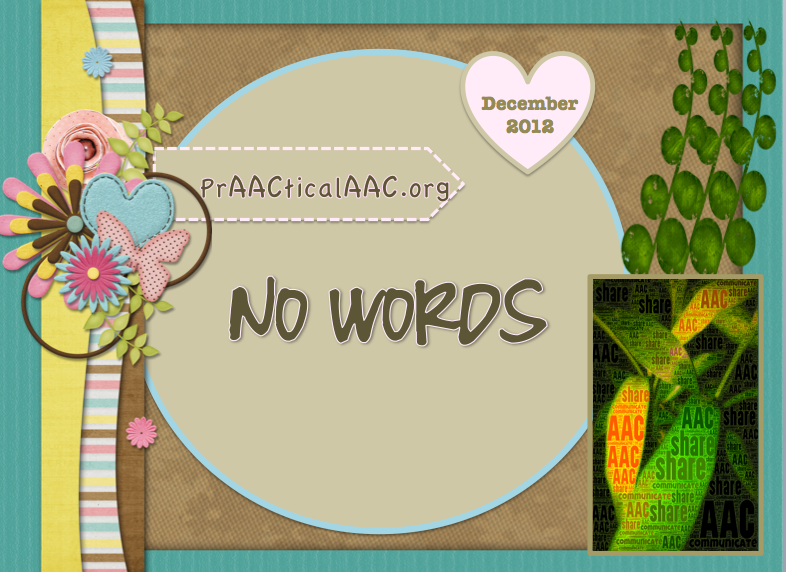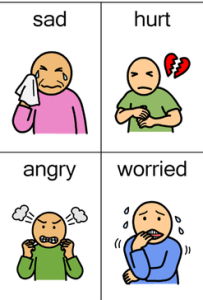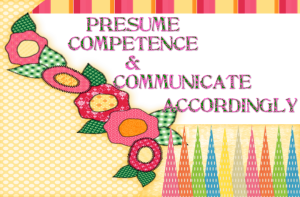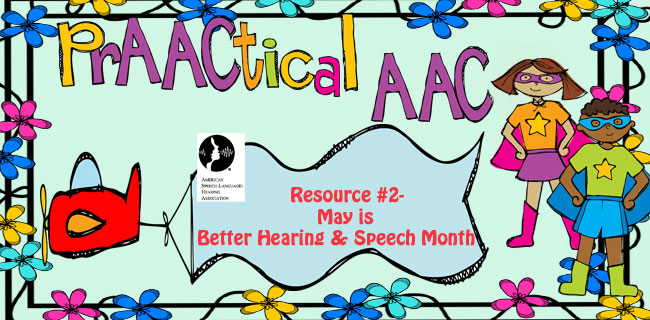“We’re Hurting, Too.”

It’s been a long few days. Like everyone else, the Sandy Hook Elementary School Massacre has been on our minds, in our hearts, and in our dreams. We didn’t want to write about it. We didn’t even want to think about it. We have refrained from tweeting and ‘Facebooking’ about it. It’s all just too hard. Too sad. Too overwhelming. Too… Well, you know. But as the numbness started to wear off, we realized that we couldn’t avoid blogging about it.
Why? Because it matters to people with AAC needs, too. And we, of all people, should understand that silence is not the answer.
Unfortunately, we have been through other horrific world events and people who use AAC or communicate in other unconventional way have told us. “We’re hurting, too.” The SLP community has something to offer here and a responsibility to help where we can. As clinicians, we agonize. “What should I do if a student brings it up?” “How can I help families who ask us: ‘Do I talk about it? And, if so, how?'” There are no simple answers, but here are a few thoughts on talking to children and adults with significant communication disabilities about horrific current events.
Although understanding occurs at different levels, many of the children and adults we work with ‘get’ much more than we give them credit for. We have seen this time and time again. Our guiding philosophy is to presume competence and communicate accordingly. With this in mind, realize that ALL people understand passion, sadness, worry, anger, and pain. They understand a lot. They understand fast or slow actions and they understand panic. They understand different facial expressions. They understand differences in the expected routine. They understand the energy of the environment. They understand. At some level, we all understand. Just what they understand varies widely.
For many people with AAC needs, it is hard to know exactly how they are experiencing these events and our reactions to them. It falls on caring adults to explain, at an appropriate level, using explanations that help them make sense of what is going on. Without those explanations, there is too much room for misinterpretation. For example, they may think the emotionally raw atmosphere is directed at them or something they should be scared about. They might not be able to let us know what they know or how they feel in a traditional way. We need to look for signs of distress that might not be overtly expressed. We need to help provide a way to understand and process what is happening.
Things To Look For That Might Communicate A Message
- Increased agitation
- Increased physical distress (headaches, stomachaches, etc.)
- Lower frustration tolerance during work tasks
- Increased meltdowns
- Requesting more breaks
- Requesting more comfort items
- Needing to hold on to transitional objects more intensely or frequently
- Any change in expected behavior
General Communication Strategies 
- Provide short, modified social stories (personal participation stories). The stories do not have to be about the specific incident (unless that is age and processing level appropriate), but instead about sadness, anxiety, anger, etc. and what to do that helps make people move towards feeling better.
- Accept sadness and communicate with aided language input that the emotion (any emotion) is okay and that you are ‘with them’ and understand.
- Use self-calming strategies.
- Try and modulate your emotions but If YOU are feeling unduly sad or angry, it is okay to explain with aided language input. Make it simple and make sure it is visually clear that the emotion is not related to them in any way.
- Model what you are doing to help yourself ‘feel better’.
- If you have had a discussion (even a brief, whispered conversation) with a parent or teacher, and a student with AAC needs is nearby, explain why you may have spoken loudly, whispered, had tears, or whatever, in a developmentally appropriate way.
- Make sure AAC vocabulary allows learner to communicate about emotions and issues related to general sadness but also some specifics
- Provide opportunities for drawing if appropriate
For more specific tips that you can share with families, check out the handout in our toolbox.
Special Needs
Talk Sense-Communication and Loss
The Coffee Klatch Communicating with Nonverbal, Deaf or Mute Children
Helping Children with Developmental Disabilities Cope with Traumatic Events
Helping Children with Cognitive Disabilities Cope with Disasters
General (Adapt with Aided Language Input and Visual Supports)
US Department of Health and Human Services
Filed under: PrAACtical Thinking
Tagged With: current events, Grief, Tragedy
This post was written by Robin Parker


